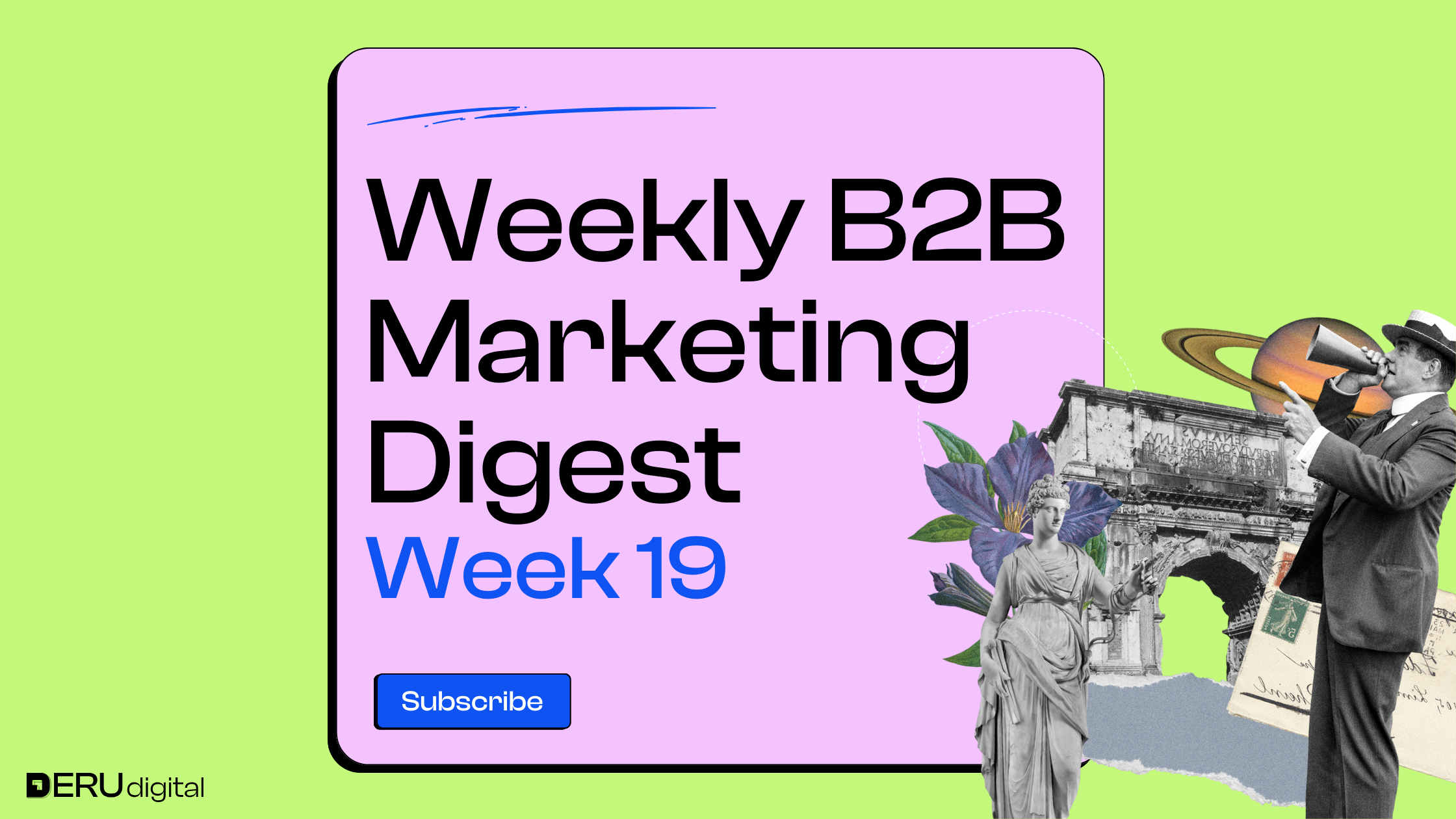Business on the inside.


INSIGHTS FROM EXPERTS ON LINKEDIN
Jonathan Bland points out that in mid-market and enterprise sales, the people actually feeling the problem, not the execs, are usually the ones driving product research. These folks search for solutions, talk to peers, and often influence the final decision, even if they’re not signing the contract. So instead of putting all your budget toward C-level titles, it makes more sense to speak to the people in the trenches.

Adam Holmgren tested Reddit Ads across niche and broad subreddits, and the results were pretty clear: small, hyper-relevant communities like r/LinkedinAds outperformed in quality, even if the reach was limited. Broad subreddits and keyword targeting brought more traffic, but didn’t convert nearly as well. Turns out, Reddit can work for B2B – but you’ve got to get specific and make your ads feel like part of the feed.
Mikkel Bach-Andersen shares that one of the biggest mistakes in go-to-market is using the wrong playbook for your audience. Things fall apart when companies push high-touch sales on SMBs or try to automate their way into big enterprise deals. The better move is to build your GTM around how different segments actually want to buy – not just how you want to sell.
Tim Davidson drops 35 practical tips for running better LinkedIn ad campaigns, covering everything from targeting and bidding to exclusions and creative testing. He calls out common mistakes like relying on audience expansion, misusing lead gen forms, or blindly following LinkedIn’s auto-recommendations. The overall message: keep it tight, test a lot, and pay attention to what happens beyond the click.
Sandra Rand highlights a major disconnect in B2B marketing – expecting campaign results in two weeks when most impact doesn’t show up until months later. She argues that impatience is breaking trust in marketing and killing long-term brand-building efforts. Marketing works best when it’s allowed to build momentum over time, not when it’s rushed like a magic trick.

Elena Jasper breaks down the difference between being distinctive (easy to recognize) and being differentiated (giving people a reason to choose you). Distinctiveness helps brands stand out and stick in memory, especially in fast-moving channels like TV, while differentiation adds meaning. Strong brands find the right mix based on their space – it’s not either/or.

Ali Yildirim🌲 shares a surprising insight from a LinkedIn Ads audit: the biggest issue wasn’t the ads, it was the follow-up. Even with top-notch creative and setup, only 20% of form fills turned into meetings. If you’re not optimizing what happens after someone submits a form, you’re likely missing out on most of your pipeline.
Vincent Pierri says the secret to confident speaking isn’t better breathing exercises or rituals – it’s having killer content. When your talk is full of value, people don’t need perfect delivery to stay engaged, and ironically, your delivery gets better because you’re more relaxed. Instead of obsessing over performance, put your energy into writing content that actually matters.

WHAT'S NEW IN THE INDUSTRY
Most B2B brands fail to stand out, blending into their categories with similar colors, visuals, and messaging-leading to poor brand recall and wasted ad spend. Leveraging distinctive brand assets like jingles, icons, and brand characters (even executives or influencers) can increase memorability and improve marketing ROI. Marketers are urged to start small and prioritize assets that drive brand recognition to escape the “sea of sameness.”
The U.S. Department of Justice is calling for Google to divest core parts of its ad tech stack, AdX and DFP, after a court ruled it illegally maintained monopoly power. If approved, the breakup could reshape how digital ads are bought and sold, impacting advertisers’ access, costs, and performance tracking. Google opposes the move, claiming it would hurt publishers and small businesses and has proposed transparency-focused alternatives instead.
Google will deprecate Structured Data Files (SDF) version 7 on November 4, requiring advertisers using Display & Video 360 to upgrade to v7.1 or newer. Failure to migrate will result in API errors and potential disruptions to programmatic ad campaigns. Advertisers should review v7.1 changes and plan their migration early to avoid interruptions.
Google is looking into a data discrepancy that may have caused missing or incomplete reports in Ad Manager and Data Transfer files on May 2 between 14:00 and 15:00 UTC. A filtration issue is suspected, and publishers may see inconsistencies in revenue tracking or campaign analytics from that period. Google has not provided a resolution timeline but promises updates as the investigation continues.
Google Ads is rolling out AI Max, a new beta tool that uses AI to uncover high-performing queries and dynamically generate ad creatives tailored to user intent. Features include smarter broad matching, real-time asset customization, brand filters, and detailed performance reporting. Early results show strong performance gains, making AI Max a promising option for advertisers seeking efficient, scalable ways to improve search campaign results.
That’s the scoop for this week! If you found this valuable and any useful insights caught your eye, feel free to share them with your network.
Until next week!



